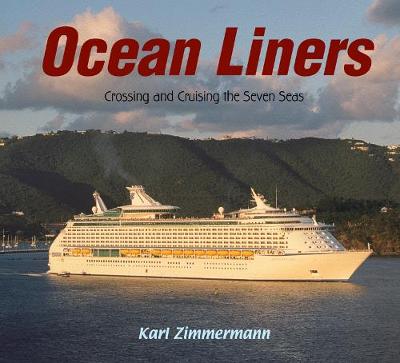Ocean liners, those majestic and glamorous passenger ships, once sailed all the world's seas. The busiest route of all, known as the 'Atlantic Ferry,' crossed the North Atlantic. The liners that sailed there played important roles in times of both peace and war. Ships such as England's Britannia, Holland's Statendam, and Germany's Amerika transported the rich and famous, as well as millions of immigrants to North America. The Titanic, among the most famous of ocean liners, steamed into legend on the night of April 14, 1912, when it collided with an iceberg. Other liners, such as the Luisitania and the Normandie, were destroyed during the two world wars. Over time, airplanes changed the nature of travel - and the role of the ocean liners.The last of the great ships that had been built for transportation turned to offering passengers the pleasures of cruising. Today's cruise ships are dramatically different from the liners of old. Bigger than ever, they are like small cities on the water.
From the Great Britain, perhaps the first great ocean liner, launched in 1843, to today's Freedom of the Seas, which has fifteen decks and carries 4,375 passengers, Karl Zimmermann tells the fascinating story of ocean liners - their history, development, and culture - through an informative text and a rich array of photographs.
- ISBN13 9781590785522
- Publish Date 16 October 2008
- Publish Status Active
- Out of Print 30 January 2013
- Publish Country US
- Imprint Boyds Mills Press
- Format Hardcover
- Pages 48
- Language English
